The Real Market With Chris Rising – Ep. 21 John Simones
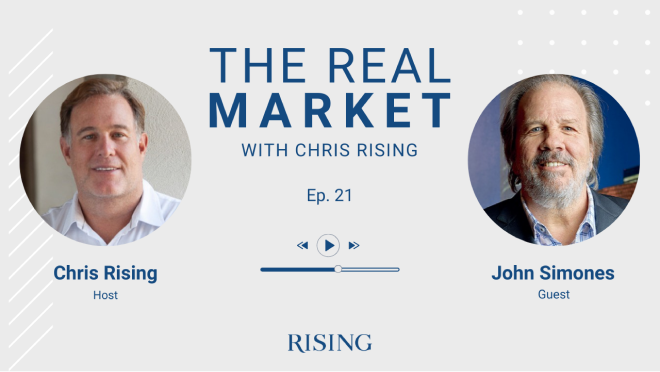
00:50 CR: Today on the podcast, I have John Simones, who is the CEO and Design Director for Jerde Architects. It’s the first podcast I’ve done face-to-face, and I think it really produces an engaging conversation. We talk about retail and where it’s going, is retail dead? Is the mall dead? I think John offers some really good ideas on where it’s headed, and we have a great discussion about the history of Jerde, Jerde Architects, and even touch on their move downtown. I hope you enjoy it.
01:23 CR: Welcome to The Real Market with Chris Rising. I’m pleased to have John Simones with me today, John, is the CEO and Design Director of Jerde. Jerde is an architecture firm that was founded here in Southern California. It’s built an unbelievable reputation in building retail, as well now as the firm has grown beyond that, and there’s lots of exciting projects. So John, pleased to have you with me today.
01:44 JS: Thanks Chris, glad to be here.
01:45 CR: Okay, well, why don’t you tell us a little bit about the Jerde that exists today? I think a lot of people know the history of… If you’re in the real estate business, you’ve heard of Jerde but give us your view of where you are?
01:57 JS: Well, we’re… Our core philosophy was always creating these wonderful places and we just keep on expanding into other areas where we can create wonderful places. It started off with retail, and now we’re working on mixed use projects, residential, senior citizen housing, a hospital. Trying to create a hospital that is environmentally exciting, and fun, and people aren’t rushing to get out as soon as possible. Schools, so just, kinda carrying the main thread of what our core beliefs are. And it’s kinda like a tree that grows. We’re always sprouting new branches into other realms and other areas in the field.
02:45 CR: That’s terrific. The firm’s been… Will be celebrating its 40th anniversary. It was founded by Jon Jerde. But why don’t you tell us a little about when did you get involved with the company?
02:55 JS: I was invited to work on the ’84 Olympics, which the Jerde partnership partnered with Sussman/Prejza and that was a really exciting time. I was younger then and it all came out of, what they called the Ninth Street Warehouse and it was full of graphic artists, other architects came in, Jerde partnership, Sussman/Prejza of course leading the way. And it was probably one of the most memorable experiences one can have, that co-creativity in the environment was something that you always remember. And then, of course, the thrill of seeing the ’84 Olympics and the success of it afterwards. The sad thing about it was, is after it was over, it all went away.
03:44 JS: So rather than most pieces of structures or architecture that you might design that lasts for quite some time, 50, 100 years, it lasted for two or three weeks, and was gone.
03:56 CR: Yeah, well, I think we all… Those of us who lived through it, I think that was one of the most exciting times here in Los Angeles. And excited to have them coming back in the future here.
04:06 JS: Very excited.
04:07 CR: Yeah. But the city sure has changed over that period of time, and I also think doing architecture has changed. Can you talk a little bit about what you did when you first got into the architecture field? What inspired you? And you know, what made you wanna be an architect?
04:25 JS: I just kinda fell into being… Kinda fell into it. And when I went to school, I thought architecture was more of being a structural engineer, and then when I realized that the fun of drawing, and to design and creating, it’s just something that I fell in love with, and fortunately for me, I found the right field. And as far as inspiration, probably my advisor, thesis advisor at USC used to work for an architect named Louis Kahn, went down to the Salk Institute in La Jolla and he goes, “Look at this plaza. This was not part of the program.” And it wasn’t, program, one of the labs work space. And then when you go down to Salk, that’s not about that, it’s about the Plaza. And it was the space in between. So a couple years later when I joined the Jerde partnership, and worked with Jon and Jon was talking then about the space between the buildings and creating the experience, it all kinda fell into place, it made sense. And that was very exciting. And then, just carrying that tradition on through the years with Jon and then through my own projects here at Jerde, and what we’re doing now is just… It’s just been just a wonderful life. I can’t complain.
05:44 CR: And not many architects stay at the same firm their whole career, and…
05:49 JS: No, this was a five-years kinda stepping stone that’s lasted 35 years now, 35 plus.
05:55 CR: What do you think are some of the great things about Jerde that have kept you at the same place for all these years?
06:00 JS: I think the co-creativity… I like the fact that we’re still what we call a boutique architectural firm, we’re very close, we collaborate a lot together, with each other. Each project is unique. That’s what we kinda search for when you first go see a site or meet a client and walk the site is, what does it wanna be? Come up with that compelling story that this project uniquely wants to be. And that I think kinda helps for us because each project is unique in its own way. We don’t just don’t stamp out things, but each one has its own reason for being, and that’s what we try to promote.
06:48 CR: Just kinda looking back, I think the reputation for Jerde really was built around retail malls and the retail experience. Going back, especially in the big boom during the ’80s and early ’90s, of building these big retail malls. What has been your experience in working in retail, especially looking at where retail was in the ’80s, and where we see it today with much more open air, and much more high street feel? How do you see it has evolved?
07:20 JS: Well, fortunately, I think I can honestly say I’ve never worked on a typical shopping mall, which is kinda odd working at Jerde for as long as I have. We kinda look at retail as a glue that holds things together. It’s where the excitement is. In cities it’s the retail that people experience at the ground level, at the plain of the city, or multiple plains when you might be in creating a vertical city, like in Hong Kong. And we look at retail, as I said it’s the glue. And that is able to invite so much more, when you can change your perception of shopping as a place of consumption to shopping as a place of experience. And so, we don’t really look at it as the shopping mall, we use a lot of the ingredients of Retail 101 design. How far escalators should be? How do you anchor projects, etcetera? But we kinda look at it from, instead of the inside-out, the outside-in, what does it wanna be? How does it tie into the urban fabric? How can it enhance the city around it, or the environment around it? And then it kinda grew from there, like I mentioned before, is the tree.
08:40 JS: Retail ended up becoming fun and entertainment when we did Universal City Walk or we got into the gaming world, or just doing weird stuff like Fremont Street experience, Las Vegas City of Lights, well, what do you wanna do, what does it wanna be? A big light vault, that turns on, you hit a switch and wow. And just moving that forward. So as far as I am concerned, architecture is more about, the shopping world and architecture isn’t about the mall, but it’s creating a place. And I think there’s a huge opportunity in the future with a lot of these shopping malls that are closing in some of these communities of creating a smaller retail center that becomes more of the living room for the local environment. And they’re all in great sites, at intersections. You’ve got really good views. And adding to that, the residential component, some office component, the fun and the entertainment component to a little mixed use project on that site, that isn’t just a typical mall, but becomes kind of the hub and the community place for the local environment.
09:55 JS: So, we’re looking at some right now, which is really exciting, and I think that’s gonna be a huge play in the future, as the mall transitions from the place of consumption to a place of experience.
10:07 CR: I think that you got into it very well. I think what I see that… Kinda what the ’80s and ’90s brought us was, you lived in a place, you drove to a place where you worked and then you drove to a place where you shopped. And whether it’s traffic in some major cities, or just the desire to have an experience, because I don’t think people want the experience to buy the toothpaste, and that’s what Amazon does very well, but they will drive to have the experience. And I agree with you, I think you’re gonna see a lot of these second tier malls become their own city center, their own… With some retail, with some office and some residential, to make them work.
10:45 JS: I think it’s a huge opportunity and a lot of excitement.
10:48 CR: Yeah. Do you think… So, you’re not of the opinion that Amazon has killed the retail business, you think the retail experiential business is there?
10:54 JS: Well, I mean, it’s hurt. We haven’t really felt it in any of our projects, because people just don’t go there to consume. But at the same time, if you look at an Apple Store, most people don’t go buy things there, they go there to check it out, and they’re becoming anchors, or just standalone wonderful places like at the corner in New York City, Manhattan Island, and it’s kind of an art museum in a way. People go on in and check it out, and there’s very exciting things, and usually we also feel that if you can keep people there, and this has historically been, I think the success of some of the Jerde projects, if you can keep them there for not just the idea of consumption, but walk around together, get something to eat, people might go to look at something that they saw online, but they usually end up shopping too at the same time. So, you know, is it there? Yes, I’d be a fool to say it’s not, but am I concerned about it? No, not really, it really hasn’t affected us.
12:06 CR: That’s interesting, now when you’re looking at doing a new retail project or revamping one, how do you think about it in terms of technology? Is everything still very car dependent or do you see technology playing a role with it, an experience, or are you still very just much more focused on the human experience there?
12:29 JS: To be honest, I’m more still seeing the site. What does it wanna be? Start sketching. And I know technology is a component of it. You can’t help it, how people move today. And I know a lot of people that own centers that they count the people coming in. And what’s the trend, how the buying is through apps and stuff that they might be using. So I know it’s there and I think it is evolving, I think it’s more of something to assist the owner and the user. But as far as the technology, I think it comes down to the raw experience, similar to when people say, “So do you design something different in the US, as opposed to Europe or Asia?” Yes, we do because the place isn’t the same, but there’s just certain human qualities, the yearning to create places for the family to be together on Saturdays, and to hang out, to be seen and to see. And there’s just those things that are universal and I kinda look at when we approach our design in a similar way. As far as the creation of the projects I must admit, once I get done with the sketching, I give it over to the younger, very creative talent that we have here, and what they can do on those 3D machines it’s pretty exciting actually. It used to take a long time to build a model and poke your head up to see what it’s like, now you can fly through the project, within the manner of a few days. So that’s pretty exciting.
14:18 CR: So do you think sketching is a dying art form, or are young people coming out of school still having that ability?
14:25 JS: Unfortunately, you see fewer and fewer students coming out of the school with the ability of sketching. And I do think that is unfortunate, because as much as creating a 3D model is a great tool, as I mentioned you being, fly through, there’s something about, take a couple of pieces of cardboard and glue them together, cutting it apart, and sculpting the shape and the space in itself. So in reality versus virtual world. I like to think that we keep our toe in each and I hate to see one override the other.
15:06 CR: Well, the firm now in its 40th year has gone through some changes as well. In terms of your location, you’re now a downtown LA occupant. You guys have moved down here, had a long run in Venice. Can you talk a little bit about, from a leadership perspective, from a recruiting perspective, what was the thought process from moving from Venice to downtown LA?
15:27 JS: Well, for us moving, it was pretty easy. One of the tech companies ended up buying our office and we had to leave when our lease was up, so we didn’t really have a choice. And then when we started looking a little around, we started looking in a lot of different other areas around LA. And we just found the excitement of what’s happening in LA to be something that, it’s just truly miraculous to be quite honest with you. I moved here in 1979 and the ’80s, people would say, “Hey, LA downtown is really happening.” I’d go downtown, it’s like no, it’s not working. ’90s, no, it’s not working, 2000… But it’s happening. Residences… People are moving, they’re living downtown, a lot of restaurants, clubs being here in a wonderful 1930s building right next door, really right next door to LA’s tallest building and it’s called One Bunker Hill. I like to call it One Bunker Hill, because I think the Bunker Hill is… That’s where the city started to build, it was over by City Hall and they moved it on to Bunker Hill. And being a part of history, but at the same time being part of this reinvigoration, of the downtown area of… We’re very, very happy with. We got the old library right across street, we got the Biltmore that used to host the old Academy Awards, Pershing Square, Grand Avenue, the hype, the buzz that’s going on here, it’s fantastic. I’m loving it.
17:16 CR: Nice, nice. Well I’ll take the shameless plug on our building, I appreciate that but one of the things that you did bring up is the ability to be in one place and have a true city experience, which is not something that LA’s known for. You get that in pieces in Santa Monica, maybe you go to Century City, but this is all tied through our transportation system and… Do you find that when you’re trying to attract talent being in a place like downtown that is kind of more in the center of the Los Angeles region with transportation, is that an appealing thing for people?
17:53 JS: It is. Yeah, I think that’s a great question. We found that being here… Well, first of all, when we were on the ocean, you have 180-degree circle of people you can recruit from, and the other 180 are fish, and they don’t draw… They’re not really able to sketch quite well. So that definitely helps being in the heart of downtown because you got a full circle radius of people that you’re able to draw from, plus the other firms that moved downtown or are moving downtown. Also, we found that for the younger employees that it’s very hard on the west side. The rents are really going up, the housing’s going up where you can find nice pockets close to the downtown area or within the downtown area that are affordable for them.
18:45 JS: So from a financial point of view with housing and rent, and as I said before, the wider spectrum of where you’re able to recruit from, and just the inspiration of being in a wonderful urban environment because we’re part of that world of creating wonderful urban environments, and so it’s been a fantastic move. And I will give Rising a plug here, because I’m very happy that we were able to meet up and come into your building because it’s just been a wonderful experience. The whole transition was flawless.
19:25 CR: Well, I appreciate that. I know my father had great love and affection for Jon. And he was really excited when this was a potential. We really appreciate it, too. Let me ask you a question, ’cause you’ve talked about how your business has grown, it’s like a tree and it sprouts out, and then you get yourself into maybe some office work, you get yourself into building hospitals. What do you see as… You’ve used the term glue before, but the glue about where we are today, it certainly seems to me that the way we live, the way we work and the way we socialize are coming together in a way it never has before. Are you seeing that in all your projects that people are… Instead of isolating and siloing their lives, but what they expect out of a project meets all of those needs?
20:14 JS: I would say a little bit of each. Being a father of children in their late teens to early 30s, it is sad when you end up out at dinner, and they can’t get their nose out of their phone, and it kinda gets annoying. So I’m not too sure about where we’re going there, I think the… But I do find, and I’m watching it through my children actually that they’re starting to put their phones down a lot more and starting to really appreciate life in general. So maybe this was just a fad that was happening. I never thought at my age I’d be needing an iPhone, but it does keep me all together as far as my schedule and calls and emails and everything. I got one little gadget, I have to fool around with. So, there’s certain kind of advantages there. But where we’re going, I just think it’s always a new frontier where we’re heading and each time you move into something new, it creates challenges and challenges is what it’s all about, and solving those… We don’t look at them as problems, we look at them as challenges and coming up with new ideas.
21:31 JS: Just take Fremont Street, for example. When we did that, each little light bulb was actually four little light bulbs because they didn’t make LED screens that big, and now it’s all… Of course, they changed it all out to LEDs. So, things happened that improve, but the effect is still there, the environment of Fremont Street and we’re finding it nowadays. I’m not that worried about technology. Maybe I’m too far away from it at times. But it creates a new adventure, new challenges.
22:05 CR: And what about the globalization that we certainly have going on? You were saying you go to Hong Kong, the feel and the place is different. You go to Istanbul, it’s a little different. Do you see more of a globalization happening, where the experiences are becoming much more similar between parts of the globe? Or do you still see kind of a regionalized experience that’s different, markedly different?
22:31 JS: Yeah. For me personally when you set the politics aside, people are people all around the world. They care about being able to provide for their families and taking care of their loved ones and having a good time and I guess cultures vary very much so and the needs of the cultures. But globally, it all comes down to the basic human elements that people need, and that’s what we try to provide for. So I don’t see it. Things are unique where it took 30 years for a typical shopping mall to start to die in the United States is happening in five years in China. They’re already looking at some of their five-year-old shopping malls going, “Oh, what are we gonna do about it because someone down the street did something that’s much more exciting?”
23:26 JS: So There is that. You go to Hong Kong, we did a project that was 15 stories tall of retail, it was a vertical city. We took the analogy of a pachinko machine where you shoot the ball up and then it kinda whizzes its way back down, and that’s what we did with these big old escalators that took you to the top. So, it all creates challenges, but I think globalization, I’m all for it. The world is getting smaller. Taking a flight is no more than, either to Asia or Europe, it’s no ore than reading a book and watching a couple of movies and getting some sleep and you’re waking up and you’re going to another meeting. And so, where my commute might be 45 minutes or so, only 12 hours, but when you sleep eight of it, it’s not that bad. And you know, it’s fun talking to the different cultures and people, what’s going around. And again setting the politics aside, because in our world we’re not involved in it that much. So I don’t see much of a difference. I actually think it’s quite exciting.
24:37 CR: Is there a project that you’re working on right now or recently that you’re really excited about that you wanna talk about? Is there something that’s been an exciting experience for you, and your team?
24:48 JS: There are actually, some of them are on NDAs, non-disclosure agreements, so I can’t talk that much about them. But there’s one wonderful entertainment project that we’re doing in China that I’m quite excited about, and it’s kind of a… Talking about globalization, it’s kind of east meets the west. West component is going into China and we’re working around that and so that’s quite exciting. The project we’re doing in southern Turkey, very close to Syria, and there the stone and just the air, landscape, though it’s next to the Mediterranean, it creates a very exciting challenge in itself. And then work… And I love Eastern Europe because it’s come along such a… In the last 30 years since the fall of the Soviet Union, Romania and Hungary and all these other countries are kind of the new frontier, which is fun. And a lot of what we learned overseas is what we really want to start applying here.
26:02 JS: It’s not like all of our projects have to be 15 stories retail, because a lot of our projects are in smaller cities around the globe and to create a wonderful mix use project in the city center of any city and really have that be the catalyst of growth and a true place that people will wanna come down to see. I think you gonna see more and more of that throughout the United States, especially with metro lines, TOD centers, wonderful opportunities there. Like I say, not everyone wants to wait and drive in the car. You live… You got TOD transportation centers, like a metro station, and, or work there. It’s their technology in this kinda new world. It’s not really new in the east coast, but it is here for us here in LA, is actually quite exciting, too.
26:52 CR: That’s terrific. Do you find when you’re working with your global clients, that they come with a lot of ideas that you then say, “I gotta rethink that, because I hadn’t thought of it that way.” Or are you going there and saying, “This is a blank slate. Let me tell you how I think you should look at it.” How is that interaction with your international clients?
27:13 JS: You know, it’s not so much the international clients, it’s the clients that, I don’t wanna say is naive, just not that familiar. And so they trust in you, which gives you a little bit more freedom to explore. And they put your faith in you, than some of the other clients that are more familiar with the formulas that they’re familiar with and if you’re trying to do something that might kind of break the mold, but most clients are trustworthy, and they want something new, too. A lot of clients also want to create a project that would become something special to them, and give them a lifelong legacy and so forth. So clients vary. You got some good ones, you got some difficult ones, it’s like people.
28:07 CR: That’s right. That’s right. Let me ask you, I assume, but I wanna make sure that Jerde works kind of on a 24-hour cycle. You have people around the globe. How does that change the way you used to work? Does it make it better or worse that you’re pretty much on call. You’re in the client service business, when it’s all said and done. How does that 24 hour world work for you?
28:29 JS: That’s a great question. I remember 20, 30 years ago, everyone was saying how technology was gonna make our life easier for us. Wrong. It’s not that way. It is 24 hours. I can remember back when we used to send drawings and cut them up in eight and a half length sheets and send them through the fax machine so that they can get it now. And now you can send whole files for the whole drawing through the computer and they receive them five minutes later. And usually we work with an executive architect that’s in the local area where we are working with, so when we’re sleeping, they’re working, they’re sending stuff. So right when you starting, first thing in the morning, there’s the whole list of things then you can start working on in the comments. So it is a 24-hour cycle and at the same time it’s exciting because you’re constantly on the roll and when you’re moving fast, you get the adrenaline going. And I think the creative spirits come out more than when you, kind of, take time off. Of course sometimes taking time off gives you a fresh look when you come back at things. But it’s a 24-hour cycle nowadays.
29:54 CR: I have to remind our young people that when you cut and paste, that literally comes from when we would take a document and we would cut it, and paste it. It wasn’t just some cool idea, “Oh, that’s like if you did it. ” It was real. But…
30:05 JS: Yeah, when you paste it, you use Spray Mount at your desk, and put the fumes up in the air for everyone while you’re smoking a cigarette. Those days aren’t there anymore.
30:15 CR: That’s right. That’s right. Have you… When you’re looking at people coming out of school today, and you’re looking at making hires or bringing people in from other firms, what are characteristics that you, at Jerde, and your colleagues look for in a potential employee, or bringing someone over?
30:34 JS: Three things primarily. First one is creative talent, second one’s talent, and third is talent.
30:43 JS: We like the talent. It’s so important to find talented people, and have them be part of the family and the team, and really work together in what we call the co-creative process. And of course intelligence is there, but we primarily look for talent.
31:03 CR: Is there anything being a global firm that you also, may be more specialized, but are you looking for people who can speak Mandarin, or people who can… Is that a skill that’s needed or desired by you, or is that… Are the language differences in today’s world not as big as they used to be?
31:20 JS: Oh, no. We hire from all around. If you walk through our office, you’ll see people from many different countries. I don’t even know how many countries. We’re not even 100 people. We’re still kind of a… We like it that way. We intentionally keep it at about that much. We don’t wanna grow, we don’t wanna be a larger company. So the boutique architectural firm that we are, we wanna remain that way. But when you walk through there’s probably, just off the top of my head, 10 different countries people are with, have come from. Bringing their experiences. We don’t intentionally hire, it’s just that the talent, just like everything else we were talking about earlier, globally. It’s throughout. There’s talented people all around the world and we try to grab them up, and we don’t care where they come from.
32:16 CR: Well, I joke with my team that with the skillset I had coming out of school in the late ’80s, early ’90s, I don’t know if I would have been employable today. Cause what our young people do coming out of school would’ve taken about five of my friends at the time. But are you surprised at how, or maybe not surprised, at how young people coming into the workforce are prepared? Or do you find it a challenge, and it takes more training?
32:45 JS: No, actually… Well, I think it’s been the same throughout. I think the school systems, especially the architectural schools, and colleges in the local area, which we hire a lot from. But people come from all around. I think they do a great job. They graduate with a wonderful skillset. And they turn out just fine.
33:09 CR: And they can come right in and work day one.
33:11 JS: Well, it usually takes a little while to get used to. We’re not the typical architectural firm. So it takes a little while for them to get in, so we give them that breathing room. But once they get rolling…
33:21 CR: What are some of the differences? What can we highlight about Jerde that you think are different than some of the other firms that…
33:27 JS: I think the idea… Well, there’s a lot of knowledge, as I was talking about earlier, about the Retail 101, which you gotta learn. So you can’t be naïve, you gotta do things right. You gotta make sure things work. You can’t have a failure as a project, you want it to be successful. But also just the attitude of, “How do you create experience?” They pretty much learn the world of object making, which is a wonderful thing, in itself. And we pride ourselves in making wonderful objects, too. We just like making wonderful spaces between the wonderful objects, and to create that sense of experience and place. And kind of… For me, it was a little bit easier, because my thesis advisor as I talked about earlier, and seeing Salk Institute, and just being awed by the space. But that takes a little while to get into it. Those that learn, learn. And you just move on.
34:27 CR: Has there been a change, or a noticeable change, or do you think it’s been enhanced since Jon retired, but then since he passed away. Or are there values that he really professed that are still really present in the firm today?
34:45 JS: Oh, I think the values have continued. We have six principal designers, and we’ve all been working together here for 180-200 years, collectively, if you put us all together. And we all worked with Jon very closely. And Jon was the kind of person that he didn’t have to be in total control. If you came up with a good idea, you only had about three sentences to explain it to him. So, I usually built a model and went in and showed it to Jon, and he’d look at it, then look at me, and look at it, and look at me. And then, “Oh, okay. Let’s go for it.” So we kinda had that freedom, working with Jon, of course under his mentorship when we were younger. And then as we got a little older, we started taking on our own projects, and working more with Jon and the creation of it. So he was a wonderful mentor. And I think that has a been a success for us, being able to transition from a single-owned entity, and a well-respected architect like Jon, to the Jerde Firm. Which we are now, and we’re certainly carrying on Jon’s legacy. We purposely kept it as Jerde because we wanna honor Jon’s legacy.
36:00 JS: But what’s always been unique, and I think why each one of our projects when you look at them are unique, because everyone’s kinda got their own say in it, and their own ideas and thoughts, and we were able to transition really well. Thank you to Jon and the legacy that he provided, and the mentorship.
36:22 CR: Well, clearly, that you’ve been in the firm since you started around the Olympics, but you moved to LA in ’79. Tell us a little bit about your background, where were you raised? Tell us a little bit about your family.
36:36 JS: Well, originally I was from Iowa.
36:40 CR: What part of Iowa?
36:41 JS: Dubuque, Iowa. The only time you ever the word The City Dubuque is when someone wants to make fun of a small city, and that’s in the joke. At four years old, my family moved down to Saint Louis, seven kid family, living underneath the Lambert Airport. They extended the runway about 15 years ago, and they ended up taking our home I grew up in, so that’s gone. My grade school is gone, so, everything practically is gone. So it was kinda fun, interesting childhood, probably one of my first pieces of architecture that I can remember is when we used to… When we went in the woods and we made this wonderful three story tree house. That was always kinda, I think back to that, and how it just kinda evolved. From then I went to Detroit, University of Detroit and served time in Detroit for four years, during the ’70s, which was eyeopening, because you really realize how the car industry suffered and what life’s about.
37:44 JS: And if people know anything about University of Detroit, it’s in the center of Detroit, and it was a tough neighborhood and tough times in the ’70s, and came out and interviewed at six schools. My first school was USC, and they accepted me on the spot with a teaching assistantship, which helped pay or paid for my education. It was a wonderful day. Unfortunately, I had to return back to Detroit in the cold, and I stayed out in California, worked for a wonderful architect named Victor Schumacher, who worked for Cesar Pelli, and worked for Perera. He has his own firm. He knew Jon through UCLA, and that’s how I got into the Olympics and thought joining Jerde would be a great five year gig and turned out to be 35. And here I am.
38:35 CR: And you got married and…
38:36 JS: Married? Yeah, I got married when I was 36. I did enjoy my younger years, living down in Hermosa Beach. And wonderful group of friends, and actually I went back, my father had passed away, to visit my mother and went to a 20-year eighth grade reunion. All Catholic schools that go eighth grade, and saw a girl I had a crush with when I was in second grade, and ended up proposing to her two years later and moved her out to California.
39:05 CR: Wow, that’s a great story.
39:06 JS: Yeah. And still very happily married and four kids.
39:11 CR: Terrific. You said youngest in the teenage years, and oldest…
39:15 JS: Yeah, oldest in the, yeah, 31.
39:18 CR: 31, wow.
39:19 JS: 19 to 31.
39:20 CR: So you’ve made Southern California your home. I can…
39:23 JS: California is my home.
39:24 CR: I will tell you, I’ve been to Detroit twice this year, and…
39:27 JS: It’s coming back.
39:28 CR: It is.
39:28 JS: That’s great.
39:28 CR: The downtown is really amazing.
39:29 JS: Yes. Yes.
39:30 CR: I look at it, it’s kind of in circles, the downtown is fantastic. It needs to keep going out.
39:35 JS: Yeah, it’s gotta make its way to 8 Mile.
39:37 CR: Yes. Yes, it does, it does. But what is it about Southern California that has kept you here beyond you love your job, and there was a good… But is there something unique about Los Angeles, Southern California, the beach, that you think is…
39:50 JS: Southern California just offers… I remember the first summer that I was here, after my first year of school, I came out in September and the next summer, and we went up to do fishing, to do some fishing up at Mammoth Lakes, and they still had snow. So I came back on a Sunday, we skied half a day, played volleyball on the beach, the other half of the day, after we got done with the five-hour drive, and I took a swim in the sunset and thinking, in the ocean thinking, “Wow, how many other places can offer all of this?”
40:28 JS: So I love going skiing, local and up in Mammoth and just… I just love LA, I think LA is a wonderful place, and I love the small communities down by the beach, I think they are a lot of fun. They’re over a 100 years old, a lot of them. And LA is… It’s that you really appreciate LA when you travel as much as we do, because when you come back home, and you get off the plane and you’re going back home, you just think there’s no place like home.
41:00 CR: Yeah, that’s right. There’s no… As I often say, there’s no humidity and there are no bugs. I mean, compared to what most places in the world have.
41:05 JS: Yeah, Saint Louis is… I know what you’re talking about. Those mosquitoes during the summer time.
41:11 CR: So as you all, your partners and yourself, you’re looking at a wonderful 40-year run, the company has grown into an international company, what do you see is the future for Jerde and for both your partners, but also your employees? How do you look at the future?
41:29 JS: That core philosophy to keep growing the tree, to keep on expanding. We have over a billion people that come visit our projects each year, and it’s kind of a testimony to what we do. We touch a lot of lives and that’s kind of important. We’ve helped reinvigorate a lot of cities, and to keep on growing that tree and to create that sense of experience and bringing something that’s quite visceral to the visitor, but not just in retail or mixed use projects. But as we talked about before, other types of projects, education, possibly medical. And we did a wonderful senior citizen housing project that you can just see the elderly, just always smiling when they’re going down to the support facilities and stuff that we provided for them. And just keep growing the tree and branching out, trying to spread that wonderful feeling of happy experiences and places.
42:33 CR: And given that the financial world talks so much about the demise of the retail experience and all that, I’d love to… You’ve said you think it’s not going away, it may change, but people want a place to be. What do you think Jerde’s role is gonna be as we see redevelopments? Do you think you’ll be really focused on that even though you’re growing the tree, do you think the heart of Jerde will still be, “Hey, we really know how to create great retail experiences.”
43:00 JS: Well as you grow the tree you keep on growing the trunk too. So yeah, I would say yes. We always wanna try and reinvent, and try to think of something new, and be able to create places that really cater to everyone. And also, as we talked about before, the environment, and just kinda create places that are hybrids, or indoor outdoor, or entertainment, cultural. We did a project in Kitakyushu, Japan, which was really exciting. Because usually cultural, you think of theaters, you think of Lincoln Center, kinda for the elite. And we had a major theater components in it. Large and medium and small hall, we also had Asahi which was the Asahi newspaper, NHK Radio, cinemas, wonderful fine dining down to food courts. So we had the high arts, we had the pop arts from theater to cinemas. And print media, to radio media, TV, radio, NHK TV and, fine dining to food court and it all came together as one, as a very wonderful project where all these people were starting to mix together. And of course it was quite large, so it was very much object making. But moving through those objects was a… It was a very exciting experience, and it was a tough city. No one thought it would work and it’s still hanging in there fun, hanging in there strong. A lot of fun for myself personally, to be able to make this work. So, just thinking outta the box, of different ways of putting different things together.
44:52 CR: Well, to see you talk with such passion, it leads me to a question that I always like to ask, but if someone came to you today and said, “Hey, I’d really like to be an architect. At least what I know about, I’d like to be an architect.” What would you say to someone in their late 20s, late 20s, or late teens if they said that to you? What would you say about being an architect, today and how would you encourage them and what advice would you give them?
45:15 JS: The main advice I would probably give them is you have to have patience if you want success. And you have to work really hard. And if you’re not willing to work hard and have that patience, I would find another field because it does take a lot out of you. And it is a lot of hard work and also the patient comes also, I would say… I would love to be a musician, but I don’t know how play a musical instrument. And you certainly don’t want to hear me sing right now, but the instant gratification that one receives in being able to hit a couple of keys and feel it, and within sometimes a weekend they cut the song and they’re able to hear, and it becomes an instant success. Well it takes five to seven years to build a building. So usually, when a building gets done or a project gets done, you sit back and go, “Wow, if I had designed it now what would I have done?” Because you’ve grown so much in those five to seven years. But I would say work hard, as I believe it was Albert Einstein, 1% inspiration and 99% perspiration, and just a lot of patience. But it certainly is rewarding down the road.
46:38 CR: Yeah, you’ve been through so many projects and what I find it so interesting, having had a 30 year career in all this or 25 to 30 year career is the big, the well run, the inspirational architectural firms are still around. Most of the developers are not. Most of the developers outside of our friends at Hines and maybe Lincoln, most of the developers have a life and they go away. But what I mean by all of that is, when you create a great place and you create a place where people wanna be, that’s a legacy, that’s an amazing legacy, and you’ve done that across the globe. And I know you’ve done it here in Southern California, so I appreciate you being on the podcast. It’s been a pleasure getting to know you better and we obviously love having you here, at One Bunker Hill, which we also call CalEdison, we think it’s a… We like to use the CalEdison because most people don’t know this was the first building designed in Southern California that had the HVAC as part of the structural design.
47:44 JS: Right. I did find that out, yeah.
47:46 CR: Yeah, we’re very proud of that.
47:47 JS: I like the CalEdison too, it has a good ring to it. So I can go both ways. But it’s a wonderful building. And this has been a very exciting transition for us, just as all transitions are. You always hope for the best. And it certainly has been for us, and we thank you, Chris, and thank you a lot for inviting me onto your podcast.
48:06 CR: Well, thank you, and I’m looking forward to celebrating and raising a glass of champagne or something for the 40th anniversary.
48:10 JS: Next month, 40th anniversary.
48:12 CR: Terrific.
48:13 JS: Yes.
48:13 CR: Alright, well, thanks so much.
48:15 JS: All right, thanks a lot, Chris.
48:16 CR: Thanks. Bye-Bye.
48:16 JS: Bye-bye.
48:17 CR: Thanks, John, that was a great conversation, really enjoyed it. To our listeners, please don’t forget to subscribe to our podcast. It’s at Apple Podcast or any of the other podcast platforms. Please also go to our website at chrisrising.com. You can find a way to subscribe to our podcast there as well. And you should follow Jerde Architects on Twitter. The name is @jerdeplaces. And please don’t forget to follow me on Twitter @ChrisRising. Thanks a lot.
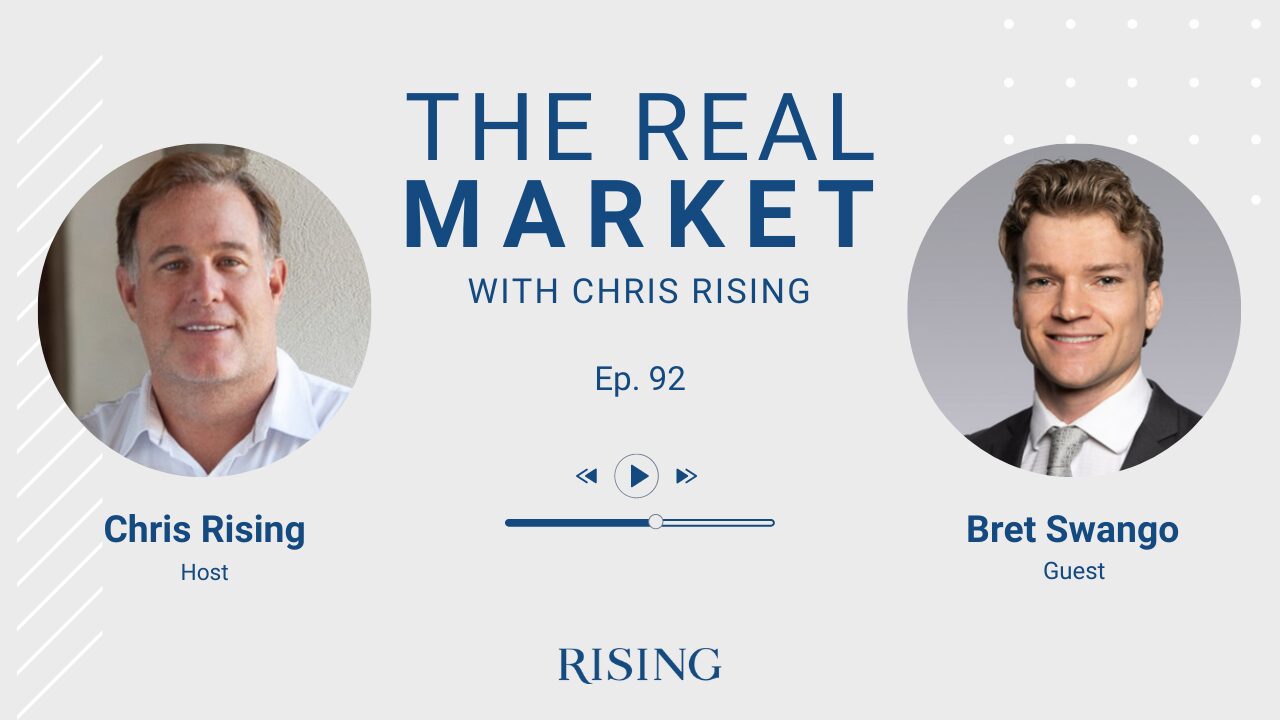
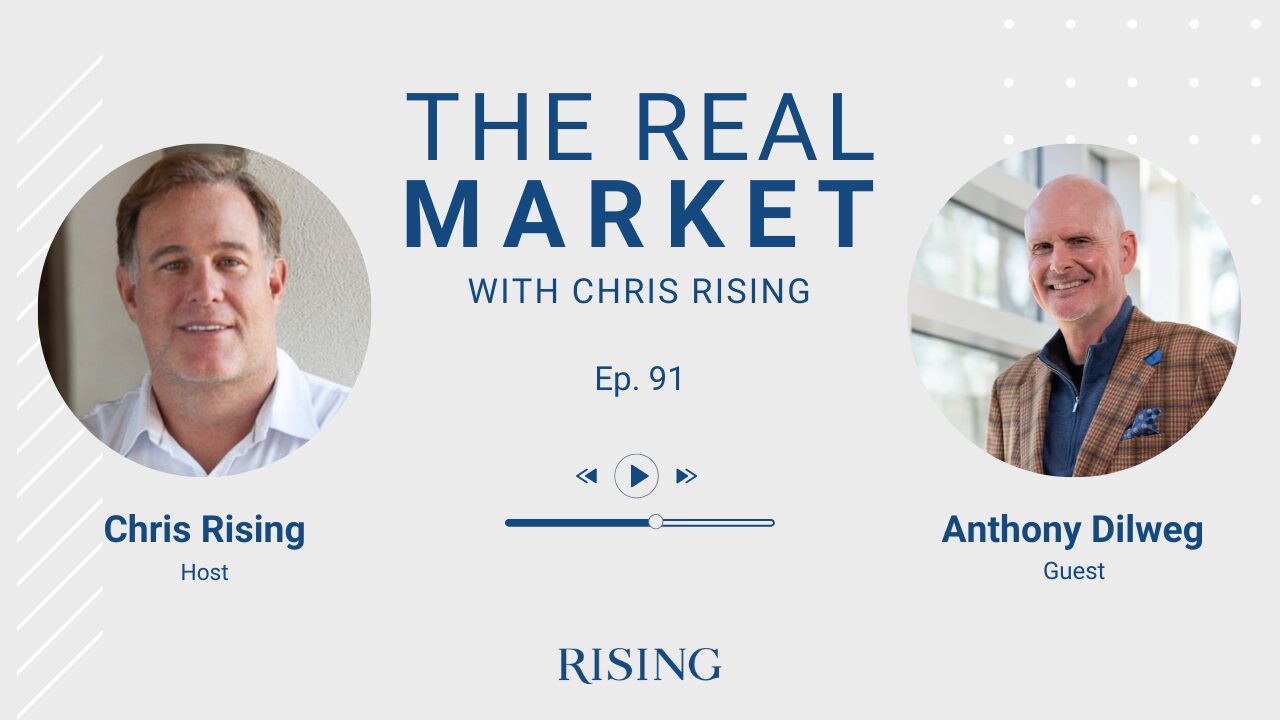
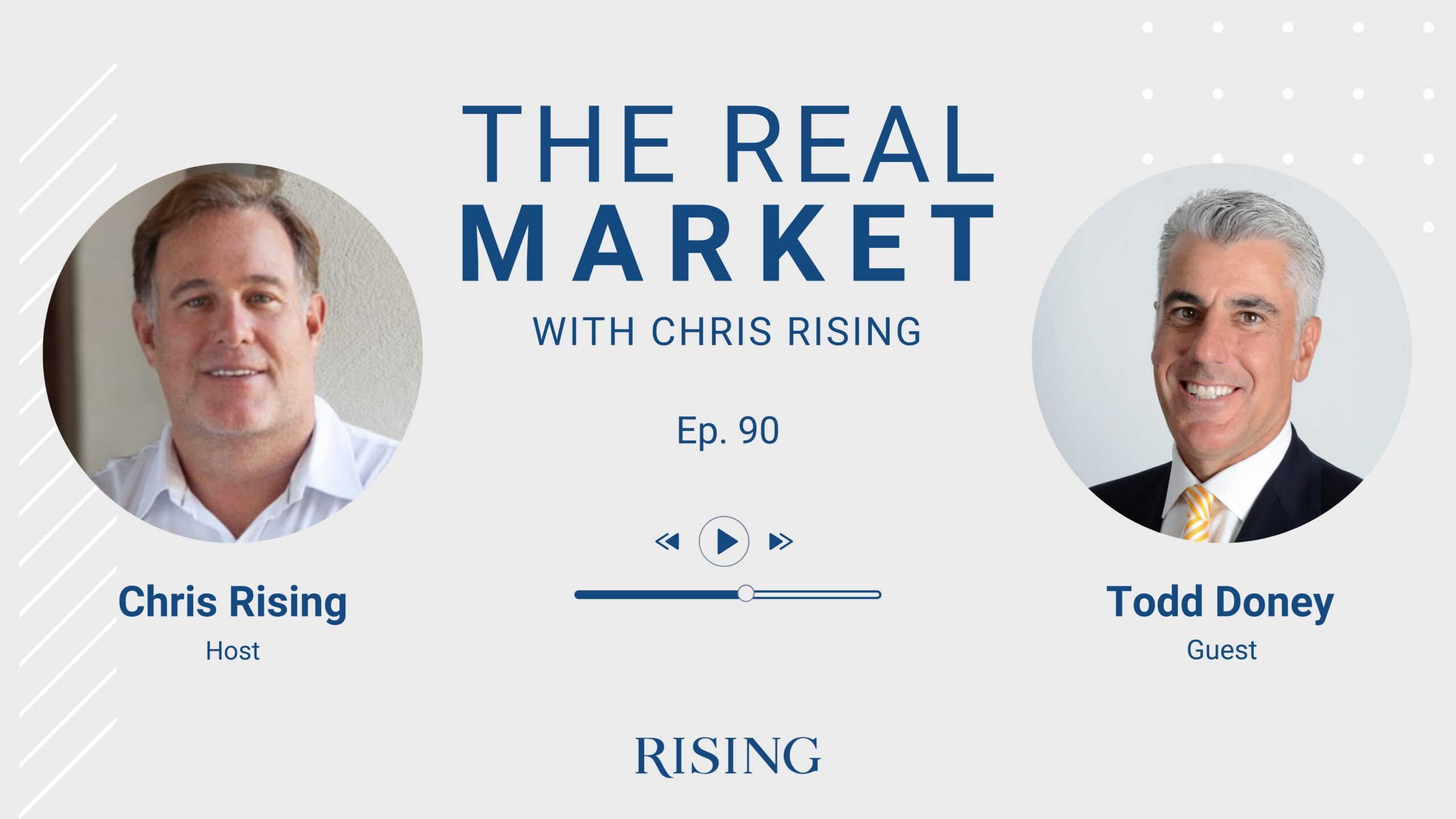
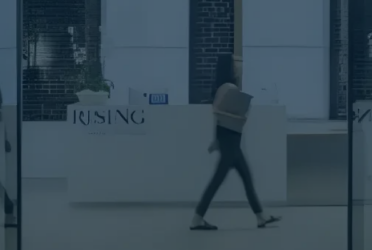
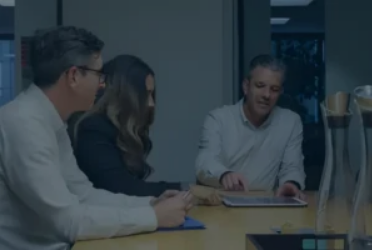
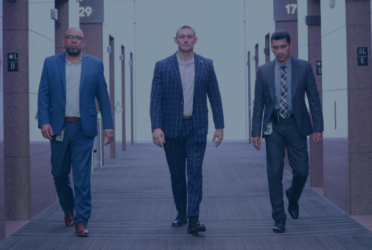
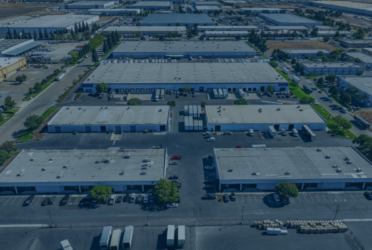
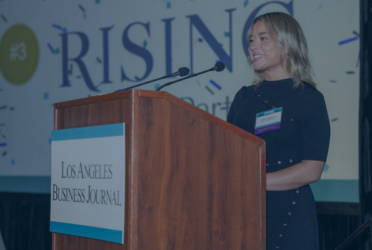
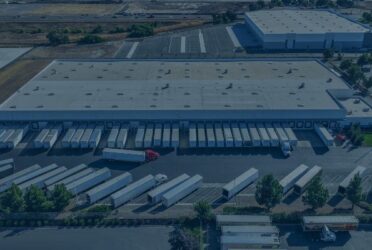
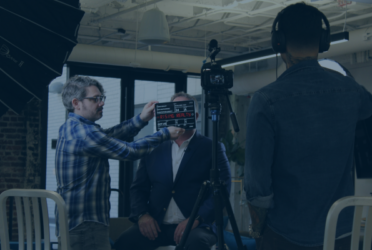
 Podcast
Podcast